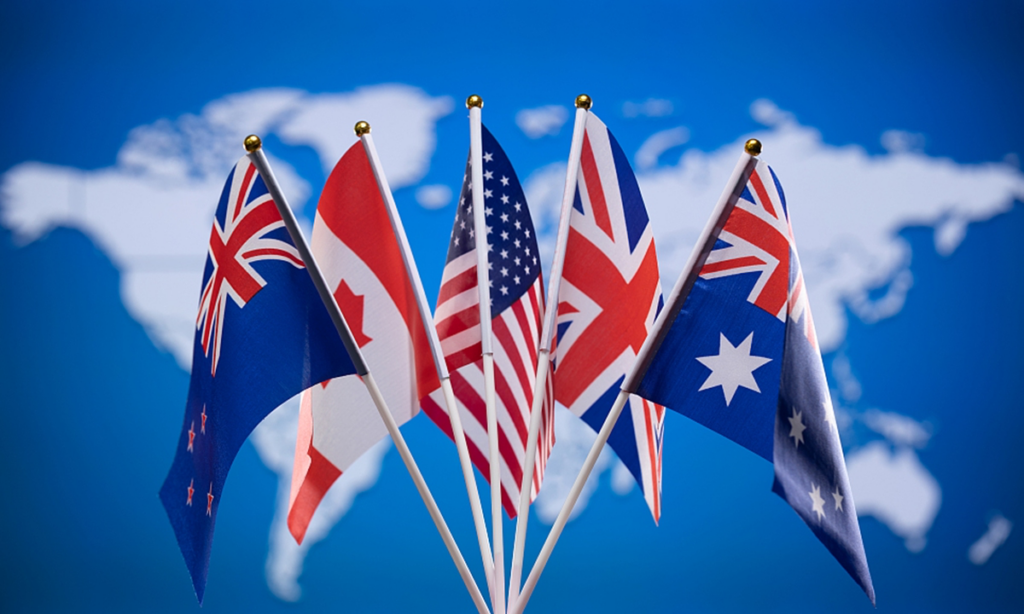A top White House official has proposed removing Canada from the Five Eyes, an influential alliance of five countries that share intelligence.
Peter Navarro, who is known as a 'close advisor' to the US President, is mobilizing to take such steps amid Donald Trump's various 'threats', including making Canada the 51st state of the United States.
The British daily The Financial Times reported this news, citing people in the Trump administration who are aware of Navarro's "efforts".
Five Eyes The Five Eyes is an international intelligence alliance consisting of five English-speaking countries. These countries are: United States, United Kingdom, Canada, Australia and New ZealandThe main objective of this alliance is to share national security and intelligence information with each other, so as to build a strong and integrated defense system against international threats. The intelligence activities of the Five Eyes are widely used in various security concerns, counter-terrorism operations, maintaining international stability, cyber security and many other fields. Its member countries share highly classified and sensitive information with each other, which is essential for their own national security and global security.
History and structure of Five Eyes
The story of Five Eyes begins in the aftermath of World War II. In 1941 Goulet Code Breaking Agreement An agreement was signed in which the United Kingdom and the United States pledged to share intelligence with each other. After the war, Canada, Australia, and New Zealand joined the agreement, forming the Five Eyes alliance. Its main purpose was to create an intelligence network that could help deal with crises or threats in any region of the world.
Five Eyes activities
The Five Eyes member countries share extensive intelligence with each other, and it is effective in several regions. The main activities of this alliance are as follows:
1. Intelligence Sharing
The Five Eyes' biggest activity is the sharing of intelligence information among member countries. This information can be of various types, such as:
- Signals Intelligence (SIGINT): This is information gathered from telecommunications and other electronic signals. Member countries share signals intelligence with each other, enabling them to monitor global terrorist activities, defense strategies, and other important issues.
- Human Intelligence (HUMINT): This is intelligence collected through humans, such as information collected by spies or agents.
- Imagery Intelligence (IMINT): This is information collected from satellite or aerial imagery, which is used to analyze geography or offensive activities.
2. Counter-Terrorism
One of the important tasks of the Five Eyes is counter-terrorism. Member countries share information about terrorist activities with each other and are aware of the strategies and movements of terrorist organizations. In particular, they work together to prevent terrorist attacks and disrupt terrorist organizations' networks.
Five Eyes provides a vast amount of intelligence support to detect terrorist attack plans, track the movements of terrorists, and prevent attacks. For example, after the September 11, 2001 attacks, Five Eyes member countries worked together to gather vital information about the actual terrorist networks.
3. Cybersecurity
The Five Eyes play a crucial role in combating cyberattacks and cybercrime today. These countries share cybersecurity information with each other, and protect each other from cyberattacks. They work together to combat hacking, phishing, ransomware, and other digital threats that increase cyberattacks.
In addition, Five Eyes members help each other identify and prevent cyber threats, helping them protect critical infrastructure and networks.
4. Signals Intelligence (SIGINT) and Surveillance
Five Eyes spies are highly skilled in signals intelligence, or communications intelligence. This tracks various types of telecommunications or internet data. Five Eyes member countries share signals intelligence with each other, through which they identify international criminal groups, terrorist networks, and other security threats.
5. Intelligence Surveillance
The Five Eyes member states monitor various countries, especially those that may pose terrorist activities or security threats. It targets them by monitoring telecommunications, social media, and internet portals.
Challenges and controversies
The Five Eyes alliance has always been controversial. In particular, there has been widespread criticism over its extensive surveillance and collection of personal data. Many have claimed that this intelligence activity poses a threat to personal freedom and privacy. Through such activities, governments can collect information on ordinary people, which many see as a violation of human rights.
However, members of the Five Eyes alliance refute this criticism, arguing that their activities are aimed solely at protecting national security and countering terrorism and other global threats.
The importance of Five Eyes overall
The Five Eyes is a very powerful and important intelligence alliance that plays a crucial role in maintaining global security and stability. Its member countries share intelligence with each other and work together on counter-terrorism, cybersecurity, and national security. The Five Eyes' activities are crucial in combating global terrorism, transnational crime, and other security threats, and its activities play a major role in the global security system.
Five Eyes information sharing and cooperation will become even more important in the future, as the global security situation is rapidly changing and new threats emerge.


